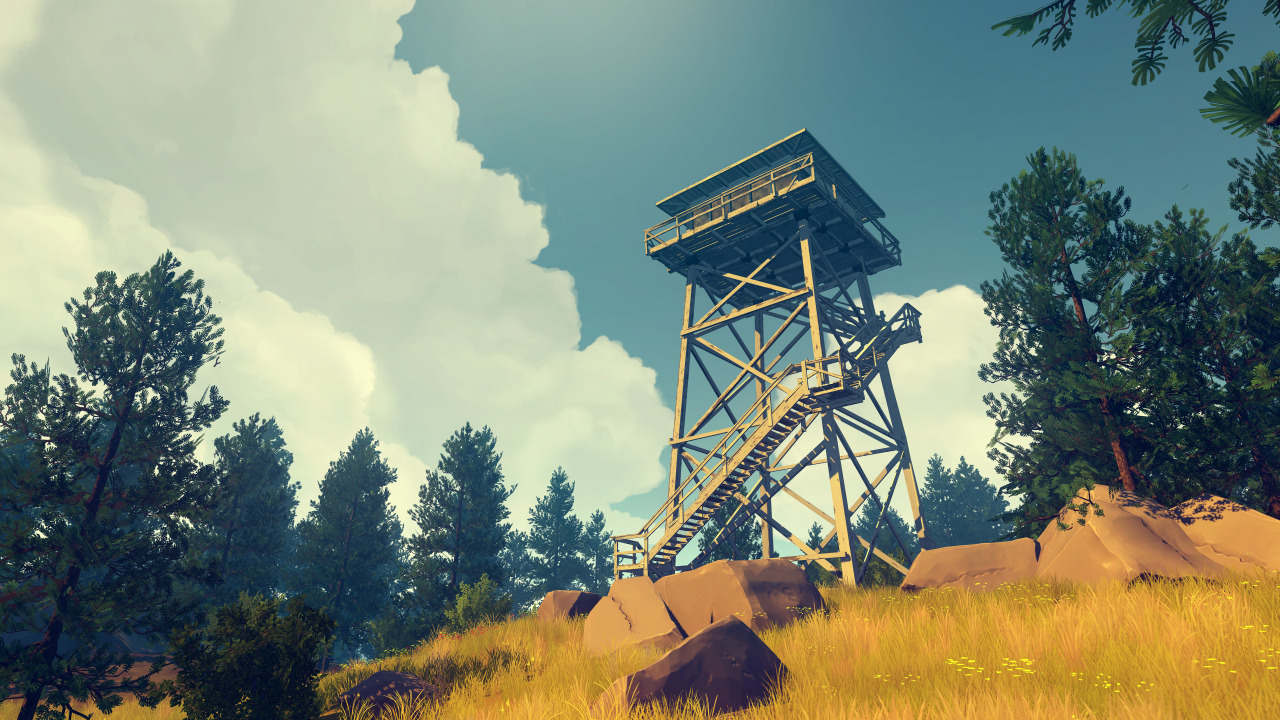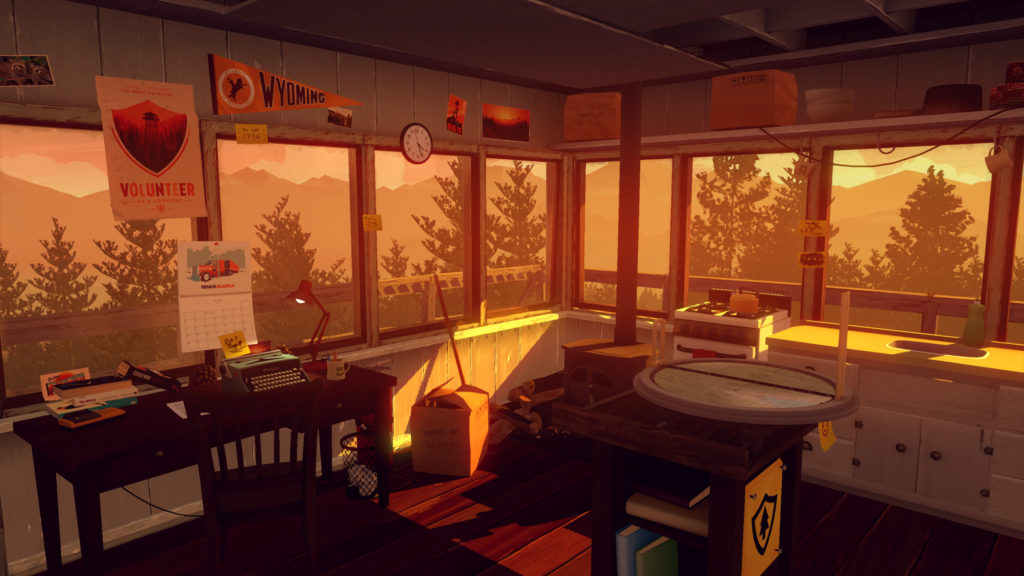Firewatch is one of those games. One of those that digs into my sense and sensibilities from the get-go and doesn’t let go. It blends its entrapping story and very human characters with an environment and gameplay mechanics that speak to a deep understanding of how humans experience landscapes. I almost suspect the developers have been paying close attention to the work of Tim Ingold.
For those of you who do not know who Tim Ingold is, let me give you a brief introduction. He is one of the most influential thinkers in cultural anthropology and archaeology alive today. His ideas, particularly as laid out in his Perception of the Environment, have found a particularly large audience amongst those who study past landscapes and people’s presence and movement in it. That said, the subjects he discusses are quite ”outdoorsy” — or pastoral, one might even say — and far removed from the world of videogames. Yet, while I was playing Firewatch, I kept thinking that this game provided some of the best practical explanation of some of his key concepts I had seen. And believe me… I have suffered through many an uninspiring paper that was inspired by Ingold’s ideas and tried to copy-paste them into a landscape study — with quite a few exceptions, of course!
Dwelling in the Rockies

Firewatch was made by San Francisco-based developer Campo Santo. It is clear they made their game with a combination of key goals in mind: immerse players in an emotional story about human actions and relationships in a beautiful environment that is seemingly quite empty of humans.
You play as Henry, a 40-year old man from Boulder, Colorado, who is taking on a summer job in the Rocky Mountains. It is 1989, which is the year after the big Yellowstone fire. As a fire lookout, Henry needs to camp out in Two Forks, a remote corner of this vast national park. Socially and emotionally, however, Henry is not a happy camper (pardon the pun). Why and how this came to be is explored during the opening section of the game, which is presented as a series of interactive memories as he makes the long trek to his firewatch lookout. Not only does this function as a good introduction to the game, but it introduces the landscape in a way that directly connects Henry’s memories to his surroundings, from happy and social (in an elevator, going to his car) to miserable and lonely (in the solitude of the Rockies).
You won’t be alone for long. Almost right away you are contacted by your regional supervisor, Delilah, who, rather than provide you with some instructions, zeroes in on that personal side of Henry that he is trying to escape from. I will not go further into the story of Henry and Delilah here, because more words may spoil it as well as cannot do justice to what follows. Let me say this, Firewatch reminded me of Hemingway’s short stories, although slightly more light-hearted and less sparse with words.
In the remainder of this edition of Games We Dig, I want to discuss Firewatch’s world and its gameplay. Campo Santo has done an awesome job at capturing the awe-inspiring nature of the Rockies. What they have done an even better job at is show how, even in the most remote and harsh places, humans can quickly make a place their home. This is (an oversimplification of) something that Ingold refers to as “dwelling”, which he uses to refer both to how we make physical dwellings as well as how beings construct and live in their environments.
The Call of the Wild

Firewatch presents us with an absolutely gorgeous open world, although what happens and particularly how you move in this world is tightly designed. The game has been grouped under what people have started to refer to as “walking simulators”. There is truth to this statement as most of what you will do in terms of gameplay is walking. However, it is a specific way of walking, a way that, following Ingold, we could call “wayfinding”. This is quite literally what you do. You can call Delilah, who is located far away in her own lookout post, for some pointers, but mostly it is you, a map, a compass and the maze of trails in the forest.
And soon enough, you will make this wilderness yours. Wayfinding makes way to dwelling when you walk around in “your” neck of the woods. Trees, ponds, meadows, rivers, and peculiar rocks will be your markers and more importantly evoke strong memories of the previous times you visited these places. Ingold also suggests that we do our dwelling and wayfinding based on a mental map. In Firewatch, you will most certainly create this mental map. What’s more, the story is literally inscribed on your actual map as you wind your ways through the long days of summer.
You will bring mementos into your lookout, like rocks, animals and other bits of “nature”. You will also “domesticate” the wilderness with ropes, axe and other “cultural” tools, like your camera. This camera will allow you to take a very limited amount of snapshots of your stay in Two Forks. A great mechanic to make you pay close attention to what you perceive in the world around you.
Firewatch blends these and other elements together to a point that the nature/culture boundaries we often perceive as being immutable in our modern lives, have completely dissolved. This does not mean that your dwelling in Two Forks becomes easier. The landscape, other people, and the gameplay all work together to provide you with considerable pushback. In short, there is harmony to this game, even if this not always a happy one. After emerging from the deep end some 5 hours later, I felt very conflicted about my Ingoldian involvement with this virtual world, in a good way.
Truth be told, I actually do not think that the developers read Ingold’s books. The fact that his ideas seem to be present there is at the same time a compliment to their recognizability and applicability as it should alert us that his thoughts are not that “special.” Ingold and his work are often placed on a pedestal and replicated over and over in theoretical frameworks. Rather, I feel we should engage with his influential theories, take them and run with them to unexpected places. Firewatch proves to me that this can be done in ways that would probably even surprise Tim Ingold himself.
